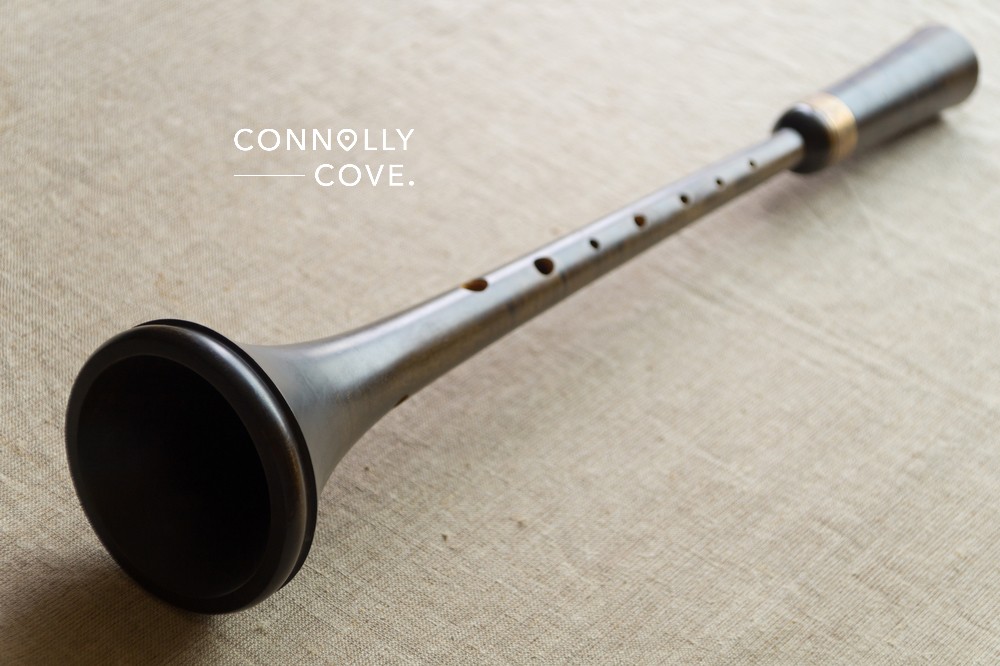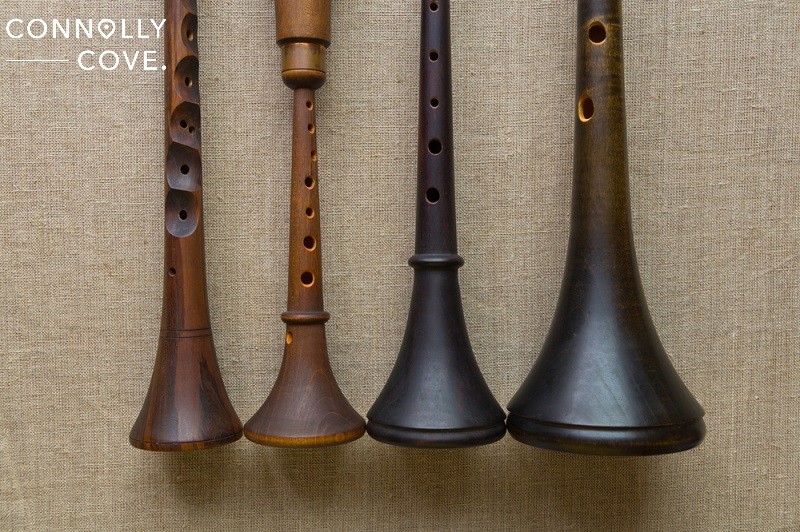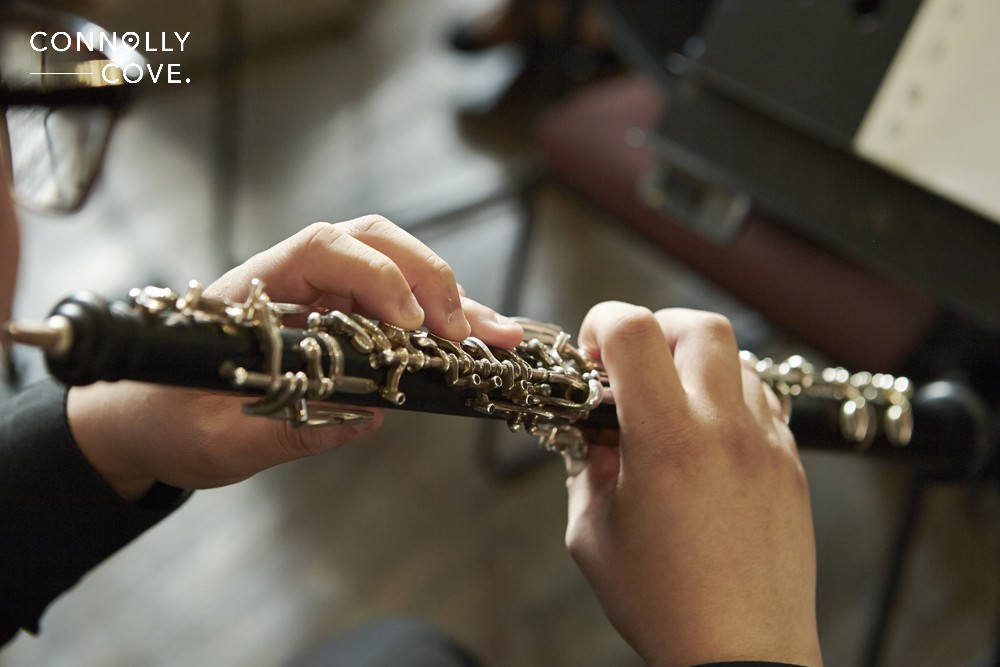The Evolution and Popularity of the Shawm: From the Middle Ages to the Renaissance

Updated On: April 22, 2024 by Aya Radwan
Classical music involves the use of numerous intriguing instruments. These instruments contribute to the elevation of the musical notes and add a distinctive rhythm to the music. One of these exciting instruments is the shawm – a double-reed wind instrument that has left an indelible imprint on Medieval and Renaissance music styles. Such styles have returned to the musical scene with historical and period drama shows.
In this article, we’ll delve deep into this musical instrument’s evolution, dissect its distinct features and trace where it still echoes in today’s musical landscape. So, pour yourself a cuppa, sit back comfortably and let’s journey through time together!
Evolution of the Shawm from the Middle Ages to the Renaissance
The shawm, a 12th-century woodwind instrument, is the predecessor of the oboe family of instruments. It is a conical instrument with wider finger holes, and European variations have a pirouette or a wooden disk to support the lips. The instrument peaked in popularity during the medieval and Renaissance periods but gradually fell out of favour as its descendants replaced it, the oboe family of instruments.
Origin of the Shawm
The shawm has Middle Eastern roots, appearing on the artistic scene in the 13th century. Vast Islamic influence contributed to the popularity of this musical instrument; the instrument had several variations in Morocco and West Africa. This double-reed wind tool has a loud and piercing tone, which makes it perfect for playing outside. It was a way to let people know something was happening!

The Crusades introduced it to Europeans, and they used the instrument extensively in their ceremonial and dance celebrations. It joined the traditional Eastern European double-reed instruments such as the Aulos and Armenian Duduk. The shawm enjoyed great centuries of success until its significance dwindled by the 17th century when people started using other tools.
Peak of Popularity During Medieval and Renaissance Periods
The Crusaders likely resorted to using this loud instrument as a part of their military operations after facing them with the Saracens. They believed the Saracens used them as psychological weapons to terrorise the enemy and thought the instrument was successful, so they decided to bring it home. In the 15th century, it was part of each dance band and was extensively used for military purposes.
In the following century, the instrument underwent numerous changes that contributed to the alteration of its tune. The reduction of the fingerholes’ sizes and the bore changes tuned down the previous loud sound of the Medieval shawm. Craftsmen built wider ranges of the instrument to accommodate different tones and bigger ones, but these were rare due to impracticality.
During the Renaissance period, the shawm became stable on civic occasions, such as announcing significant times during the day or commencing civil duties. However, this musical instrument in this period was much smaller than the Medieval shawm, and some even say it resembled the sackbut, the early form of the Renaissance trombone. Until its star faded in the 17th century, the shawm was exclusively reserved for outdoor performances or celebrations.
Gradual Replacement by The Oboe Family of Instruments
Near the end of the Renaissance period, musicians sought to use instruments softer than the shawm. French musician Martin Hotteterre invented a new instrument called the hautbois, inspired by our musical instrument. However, the hautbois had no pirouette and a more refined and controlled sound than the shawm. Years later, military bands began using the hautbois instead of it until it disappeared in the 18th century. The hautbois is known as the Baroque oboe, the first form of the instrument.

Throughout Europe, as instrument-making techniques advanced and musical tastes changed, communities began substituting the shawm for the oboe due to its smoother and refined sound compared to the shrill and piercing tone of the shawm. The advanced oboe family gradually replaced it in all musical ensembles and orchestras. This transition allowed musicians to play more harmonious and melodic pieces. Long afterwards, German town bands continued using the shawm in their daily municipal duties well into the 19th century.
Characteristics and Features of the Shawm
The shawm is a double-reed woodwind instrument with a conical bore, producing a loud and piercing sound. It comes in variations such as the Soprano, alto, and tenor shawm.
Conical Bore and Loud Sound
The unique shape of the shawm contributed to its distinctive sound. Its conical bore, tapering from a wide opening to a narrow end, allowed the air to pass through to create powerful resonances. This design ensured the instrument had a piercing tone to be ideal for outdoor performances or large spaces. It also ensured that many people could simultaneously hear the instrument, perfect for Medieval and Renaissance ensembles. Music of these eras enjoys profound depth and character due to special instruments like the shawm.
Double-reed Woodwind Instrument
The shawm paved the way for the oboe family of double-reed instruments instead of single-reed instruments. After musicians sought an alternative to its shrilling sound and resorted to the hautbois, which later developed into the modern-day oboe, the musical instrument’s role in ceremonial gatherings and ensembles dwindled away. Historically, it fits the musical style of the Medieval and Renaissance periods, and the newer versions of it suited the following eras.
The popularity of the shawm might have declined after the Renaissance period, but it has found its way back to modern music. Today, traditional and world music have brought back this shrilling instrument to better incorporate it into the unique musical world scene and to derive inspiration from Medieval sounds.
Variations Such as the Soprano, Alto and Tenor Shawm
The different variations of this musical instrument catered to different musical needs, and each produced a unique tone for another celebratory event. These variations included the Soprano shawm, which made high-pitched sounds and, like the original, was commonly used in outdoor performances. A lighter version was the Alto, which had a slightly lower range than the Soprano and original ones; hence, it added more depth to the ensembles. The last variation is the Tenor, which has a rich and resonant sound and best-suited basslines or harmonies.
Modern Popularity and Use of the Shawm
The shawm might have disappeared from the musical scene centuries ago, but it began returning through classical and traditional folk music. By bringing back this musical instrument, the world of musical performances bridges the gap between modern and Medieval sounds.
Still Used in Traditional Folk and World Music
Although no longer widely used in mainstream classical music, it still has a place in traditional folk and world music. This ancient instrument can still be heard in various cultures around the globe, adding its unique sound and character to different musical traditions.
Traditional and folk music dusted off the shawm and brought it back to the musical scene. This return sounds reasonable since it was more suitable for dance bands and outdoor performances. The shawm’s unique tune adds an authentic atmosphere to the performances alongside other traditional instruments. This harmony takes listeners back in time to connect with the cultural heritage of different regions and times.
Revival in Early Music Performances and Recordings
The revival of the shawm in early music began in the 20th century when musicians sought to recreate the exceptional sound of these musical instruments. Musicians brought it back for its loud sound that can penetrate through a choir or an ensemble, which enhances the musical performance. Other musicians were interested in the recreations of instrument makers who reconstructed and recreated versions of the old instrument and proved vital in recreating authentic Medieval music.
We can also add that the interest in the Medieval era in history captured the attention of musicians, filmmakers, performers, singers and audiences alike. The loud thunderous sound of Medieval drums and instruments rings in our ears even after the shows are over, an effect that continues until today. Viewers searched for folklore and traditional music resembling this era when the shawm was widely used.
Bridging the Gap Between Modern and Medieval Music
We’ve been fascinated by the revival of this unique musical instrument in early music performances and recordings. Modern-day music sought it for its unique sound and the flavour it adds to the music. It was featured in numerous music genres such as Pop, Jazz, Rock and Classical music. Some famous musicians who used the shawm in their music include Sting, Paul Simon and Björk.
The shawm’s deep sound proved successful in adding another dimension to modern music. When musicians want their music to step back in time, they incorporate it into the band. Artists such as the rock band Jethro Tull wished to benefit from its Medieval vibes in their song Thick as a Brick. The Shawm had a stellar solo performance in Concerto for Shawm and Strings, a classical piece by Benjamin Britten.
It’s incredible to witness how this instrument continues to captivate audiences today with its rich heritage and enchanting melodies. This continuity is proof that it is a timeless instrument.
We’ve enjoyed this fascinating trip through time, where we learnt more about the origin of numerous modern-day double-reed musical instruments. We’re most excited, too, that the shawm has made its way back into the international musical scene where the past feels like a musical performance away.
FAQs
How did the Shawm evolve over time?
The evolution of this instrument saw it grow in popularity during the Middle Ages to the Renaissance period, with changes in its structure for better music.
Is the Shawm still popular today?
Modern musical instruments have replaced it, but traditional music uses historical instruments like the shawm to create authentic sounds.
What is the shawm used for?
It was used as a loud instrument during the 12th and 13th centuries and continued for several centuries when it was widely used in dance bands and official court or municipal ceremonies.
Is the shawm hard to play?
Every instrument is easy to play when you practice well. Instruction videos are available online and only await your purchase of the instrument. A fingering chart is typically included in the online purchase.
What does the shawm sound like?
It sound like trumpets due to their conical bore and the pirouette. This construction is ideal for outdoor performances and celebrations.






